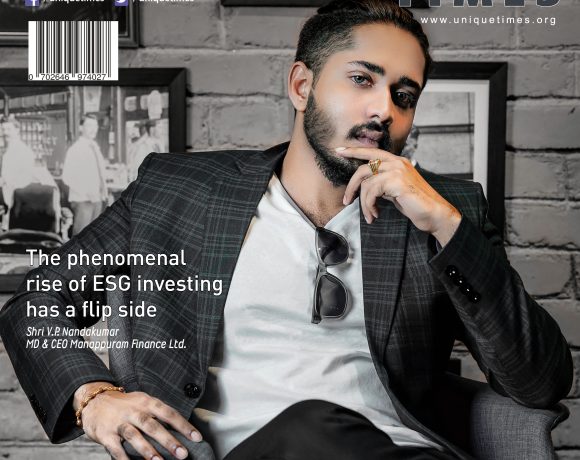V P NANDAKUMAR : INNOVATOR PAR EXCELLENCE

When banks wouldn’t lend: Raising funds in unconventional ways
For a non banking financial company (NBFC), raising funds was a big challenge in the nineties. In the aftermath of the CRB scam of 1997, getting deposits from the public was difficult and banks were not comfortable with lending to NBFCs in general. Moreover, Manappuram’s foray into gold loans was untested as a business model. Growth was slow in the initial days. The picture changed only after the company hit upon unconventional ways to raise funds, entirely bypassing the PSU banks.
In the first breakthrough, Manappuram became the first gold loan company to raise finance through the securitization and assignment route in a tie up with ICICI Bank. This arrangement with ICICI Bank — essentially involving Manappuram sourcing the gold loans to be parked in ICICI Bank’s books —continued to work well for a year or two and the company was put on the growth path. Buoyed by the success, the company planned a big expansion of the branch network. However, around 2006, ICICI Bank faced some regulatory hurdles regarding securitization and they could no longer fund the company. With ICICI Bank pulling out, the expansion plans were in jeopardy.
At this point, the company chanced to get its second break. Temasek, the sovereign investment fund of Singapore, was looking to expand its footprint in the Indian financial market. Mr. V P Nandakumar happened to be in Singapore to take part in a conference of NBFCs. Having heard Mr. V P Nandakumar speak about the gold loan business, Temasek expressed interested in financing Manappuram through their India arm Fullerton. Temasek’s debt participation provided the visibility, and paved the way for other international players to follow.
In December 2007, Manappuram became the first NBFC in Kerala to attract foreign institutional investment when the celebrated PE fund Sequoia Capital invested Rs.70 crore together with Hudson Equity Holdings. Since then, the company has regularly received foreign investment. The second round of private equity funding in November 2008 was led by Ashmore Alchemy which, together with Sequoia and Hudson, put in another Rs.108 crore. Sizable foreign investment was garnered during the two QIPS in 2010 when a total of Rs.1245 crore was raised. To this day, it remains the largest foreign investment (in US dollar terms) garnered by any Kerala based company. Once private equity came in, the company was able to shift gears and grow much faster than before because now even the PSU banks were willing to lend to it. From this point onwards, there was no looking back.
Conventionally, companies have sought funds from foreign investors after they have tapped the domestic banks and other financial institutions. In the case of Manappuram, the order was upended. Because the domestic banks were uncomfortable lending to NBFCs, especially one with an untested business model focused on gold loans, the company went out of India and roped in the foreign players first. Once they were persuaded, the domestic players became more confident about lending to the company.
A bold marketing campaign that broke new ground
Despite the vast amount of gold in private hands in India, the gold loan business is yet to grow to its true potential even today. There was a continuing stigma attached to pledging gold. Rather than use their gold to raise money, many preferred to go to moneylenders and borrow at exorbitant rates.
Manappuram has been proactive in tackling this sensitive issue head-on. V P Nandakumar followed a strategy of a big-budget advertising campaign that revolved around celebrity brand ambassadors with strong regional appeal, who talked about gold loans to the masses in their own language. When the fashion was to use one celebrity brand ambassador for a nationwide campaign, Manappuram’s campaign that began in 2010 featured a galaxy of superstars like Akshay Kumar, Mohanlal, Mithun Chakravarty, Vikram, Venkatesh, Puneeth Rajkumar etc. and they were used to target different geographies. If Mohanlal was for Kerala, Akshay Kumar was meant to cover the entire Hindi speaking belt. And then, there was Vikram for Tamil Nadu, Venkatesh for Andhra and Telengana, Mithun Chakraborty for Bengal etc. The campaign was unleashed with a budget exceeding Rs. 100 crore and it was hugely successful in establishing Manappuram as a national brand and also in growing the gold loan category as a whole because benefits were reaped by other gold loan players too.
Tailpiece: Innovation and the ‘cellular safe’
In the months following demonetisation in November 2016, when criminal gangs in the country were apparently at a loss for business, a spate of robberies took place that targeted the branches of the gold loan NBFCs. The modus operandi was simple; walk into a branch, brandish a weapon, compel the two joint custodians of the branch to open the locker or vault, empty all the contents into a bag, and run away. The whole misdeed would get over in a matter of minutes before anyone noticed and raised an alarm. V P Nandakumar was deeply perturbed by these recurring incidents. Once again, ever the innovator, he thought of a simple expedient that could deter robberies in future. The idea involved a change to the structure of the safe. Instead of the door of the safe opening to give access to all of its contents, he wanted a modification so that there would be multiple cells within the safe and each cell would be individually locked. The arrangement should be that no two cells can be opened at the same time, in other words to open another cell, it would be necessary to lock the earlier cell. In this way, a robber intent on emptying the contents of the safe would have to spend a good 20 to 30 minutes at the branch, increasing his risk of getting caught. As a matter of fact, the idea was suggested to the leading Indian manufacturers of safes and they accepted it forthwith. The ‘cellular safe’ has now been introduced in the market and Manappuram’s branches are phasing out the old safes and switching over to new cellular safes.








